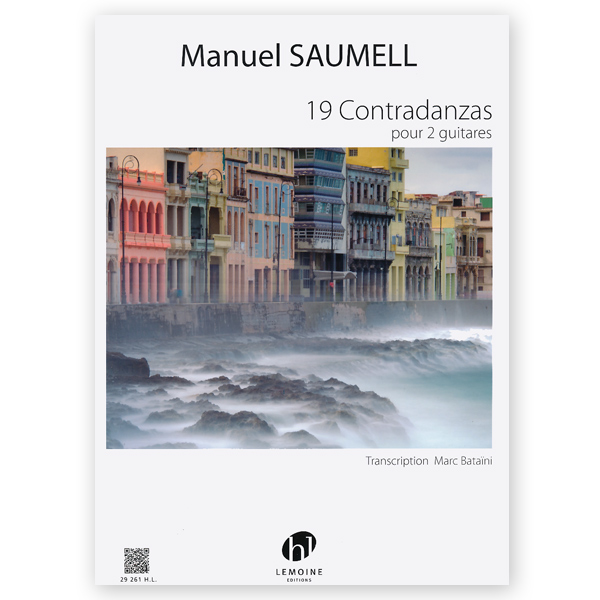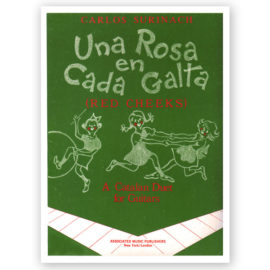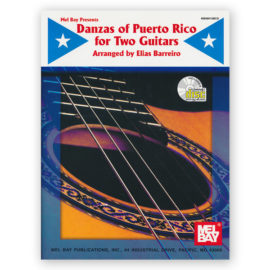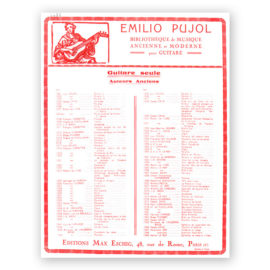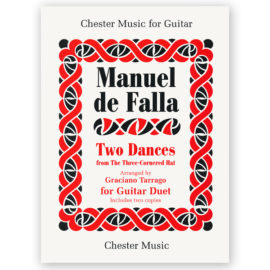Store » Saumell, Manuel. 19 Contradanzas for 2 Guitars
“Smith Brindle, Reginald. The Pillars of Karnak” has been added to your cart.
View cart
Saumell, Manuel. 19 Contradanzas for 2 Guitars
$21.95
Out of stock
Description
Manuel Saumell, 19 Contradanzas for 2 Guitars
For 2 Guitars
-
Transcribed by Marc Bataïni
-
Standard Notation
-
Score
-
39 Pages
- El bazar
- Los ojos de Pepa
- El pañuelo de Pepa
- Luisiana
- La virtuosa
- La quejosita
- El cataclismo
- Tu sonrisa
- Las quejas
- Recuerdos tristes
- Sopla, que quema
- Ayes del alma
- La nené
- La dengosa
- La Fénix
- La suavecita
- La niña bonita
- La caridad
- Lamentos de amor
-
Manuel Saumell Robrero (1817-1870) was, along with Ignacio Cervantes (1847-1905), one of the most important Cuban composers of the 19th century. Born into a modest family from Havana, he studied piano privately with Louis Moreau Gottschalk and J.F. Edelmann, and composition with Mauricio Pyke. Very soon, he began working in a wide range of musical occupations: solo concerts, with a trio (with violin and cello), musical gatherings, arranging, teaching, etc. It was, however, the composition of around fifty contradanzas for piano that made him famous.
The contradanza, a genre of music and dance, is the Cuban version of the contredanse. It has origins in England (country dance), but also in France due to the arrival of French settlers fleeing the slave rebellion of 1791 and the Haitian revolution, who took refuge with their slaves at Santiago in Cuba, bringing with them not only the culture of coffee, but their music and dances as well (contredanse, menuet etc).
The country dance is done in lines, with one row of men opposite a row of ladies, whereas the contredanse (or “face to face dance”) was danced in a “square” (later called the “quadrille”). The contradanza rapidly became fashionable in Cuban salons, but also in the more working class neighbourhoods of Havana. It later gave rise to the very popular danzon. The contradanzas by Mr. Saumell are little pieces, in a simple piano style, written with great economy of means. The most beautiful among them were not written to be danced to, but rather to be listened to. While respecting the strict framework of the traditional two-part structure, the composer demonstrates great melodic and rhythmical range. They are remarkable for the great contrast between the two parts: the first is always very close to classical European forms, while the second is invariably creole due to the use of rhythmical figures characteristic of Cuban music: habanera, tresillo (triplet), cinquillo (quintuplet). Luisiana is noteworthy example, with a first section written almost like early music that serves as an introduction to the second section filled with very typical creole rhythms.
Manuel Saumell lived on the fringes of the bourgeois salons in the Cuban capitol where fashionable music, dominated by virtuosity and superficial brilliance, was played. In his miniatures, he unites profoundly classical writing and a strong sentiment of Cuban nationalism. In La musique à Cuba (Gallimard, 1985) Alejo Carpentier states, “Thanks to him, the constituent elements of Cuban identity that had been scattered in the surrounding environment or confined to dancehalls, were notated and improved, to form a complex musical body. Thanks to the interpretive work done by Saumell, popular elements began to nourish conscious musical thought. It evolved from basic rhythmical instinct to the consciousness of a style. The idea of nationalism was born.”

